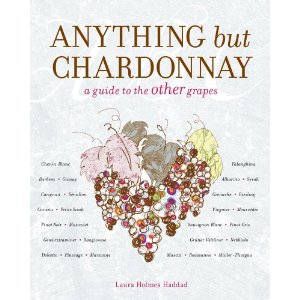Yes, there is an “Anything But Chardonnay” club, dubbed “ABC”, that from what I gather is anti anything Chardonnay. While I am not a club member, I have become mostly disenfranchised with Chardonnay. Or at least Chardonnay NOT from Burgundy. Chablis, the steely crisp Chardonnay from the Chablis region, or White Burgundy….YUM – Love it (or at least some of it)! Yet much (but of course not all) of the other stuff – POSERS!
I’m no Francophile, but I do believe that there is something magical about the wines of Burgundy. Pinot Noir’s best expression seems to come from Burgundy. Sure I’ve had some other charming Pinot Noir, but none has ever seemed as magical, complex, primal, balanced & long-lived as some of the Burgundy I’ve been fortunate to taste.
But I digress…
Getting back to Chardonnay, I attended a tasting of white wines last week. We started the tasting with 5 Chardonnays – all made in Israel at different wineries. The first two were “unoaked” Chardonnays. I do enjoy a good crisp white, but these unoaked Chard’s underwhelmed. The focus seemed more on the acidity (a vital component) than the fruit, and the resulting wines seemed bitter and unbalanced. Two of the next 3 were oaked, but sadly the oak dominated and masked any fruit that may have been hiding underneath. I did enjoy 1 of the 5 Chard’s. It seemed to have the right balance between fruit, acid, oak & cream.
Now I mention cream, but no, there was no dairy product added. In addition to the primary fermentation (that converts sugar into alcohol) in wine, there is a secondary fermentation known as “malolactic” fermentation that converts bitter “malic” acid into CREAMY “lactic” acid. This is where the buttery or creamy flavors in Chardonnay come from.
I don’t want to get too carried away with the technical aspects here, but I do want to tie in to the ABC (anything but Chardonnay) club. Chardonnay is made in cool climates (apples & peaches), moderate climates (honeydew & pears) and warm climates (pineapple & lichee). It can be 100% oak aged, or it can be partially (33%, 50%, 66%, etc.) oak aged. It can have a full malolactic, or a partial malolactic. It can be bready as a result of “sur lie” – a process whereby the dead yeast cells are left in contact with the wine and stirred around to add complexity & yeast flavors.
There are so many ways Chardonnay can be made. Personally I think the best examples originate in Burgundy. Yet while I may not be a fan of lots of the Chardonnay out there, I am often surprised by a winemakers ability to make the right style Chardonnay for his fruit.
So if you have had a bad Chardonnay & have considered joining the ABC club, I implore you not to give up. Keep an open mind, taste when you can, and when all else fails pick up a White Burgundy.
Happy Chardonnay Wine Tasting!
WTG
Tags: anything but chardonnay, Burgundy, malolactic, sur lie

Hello,
I just learned about your recent event and wanted to tell you
about our site, LocalWineEvents [dot] com.
It’s free to post your food and wine events to LWE, which has over 115,000
subscribers and 1 million page views per month – and – we’d love to have them
listed!
Cheers!
~ Lee
LocalWineEvents
“The World’s Leading Wine Events Calendar”
[…] more from the original source: Anything But Chardonnay This entry was posted in Burgundy, Chardonnay, Uncategorized, Wine STUFF, anything but […]